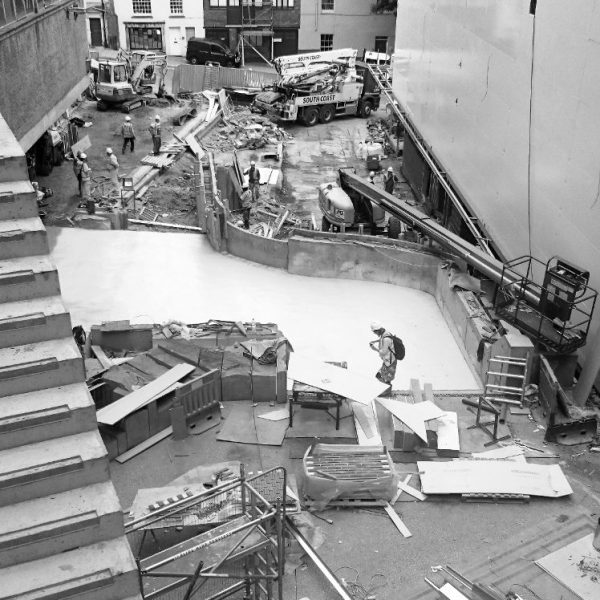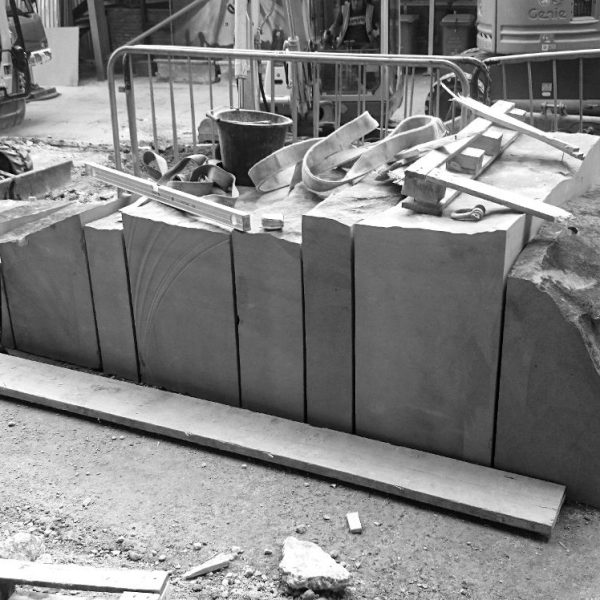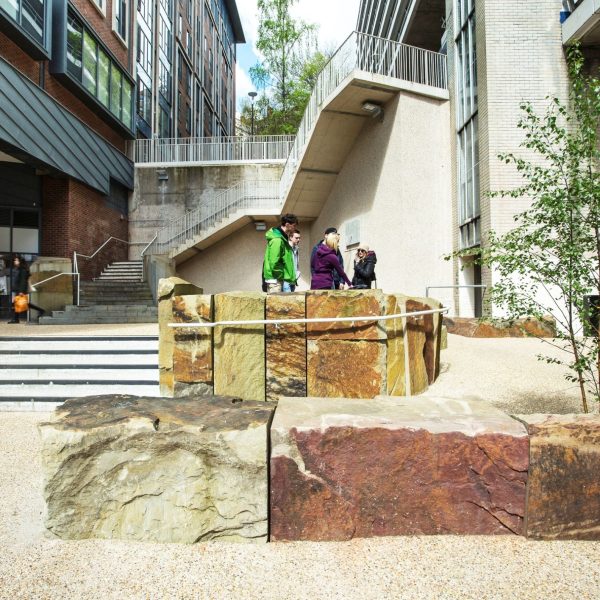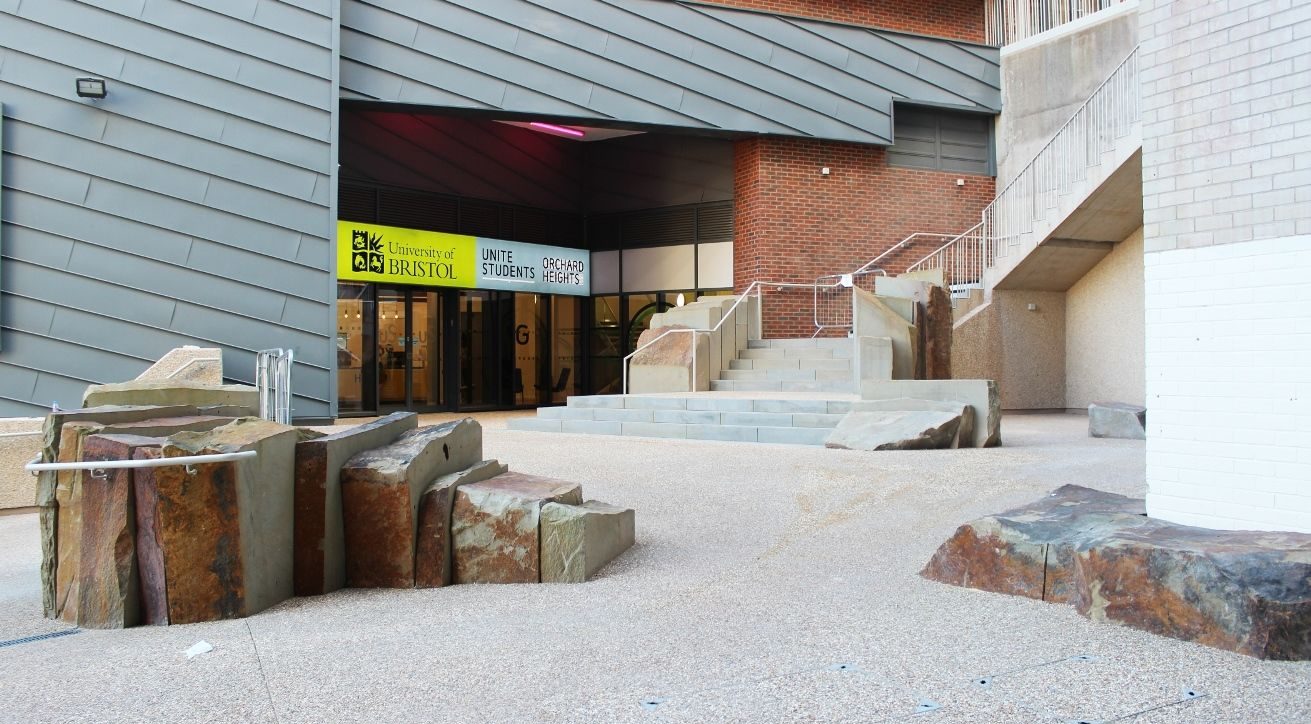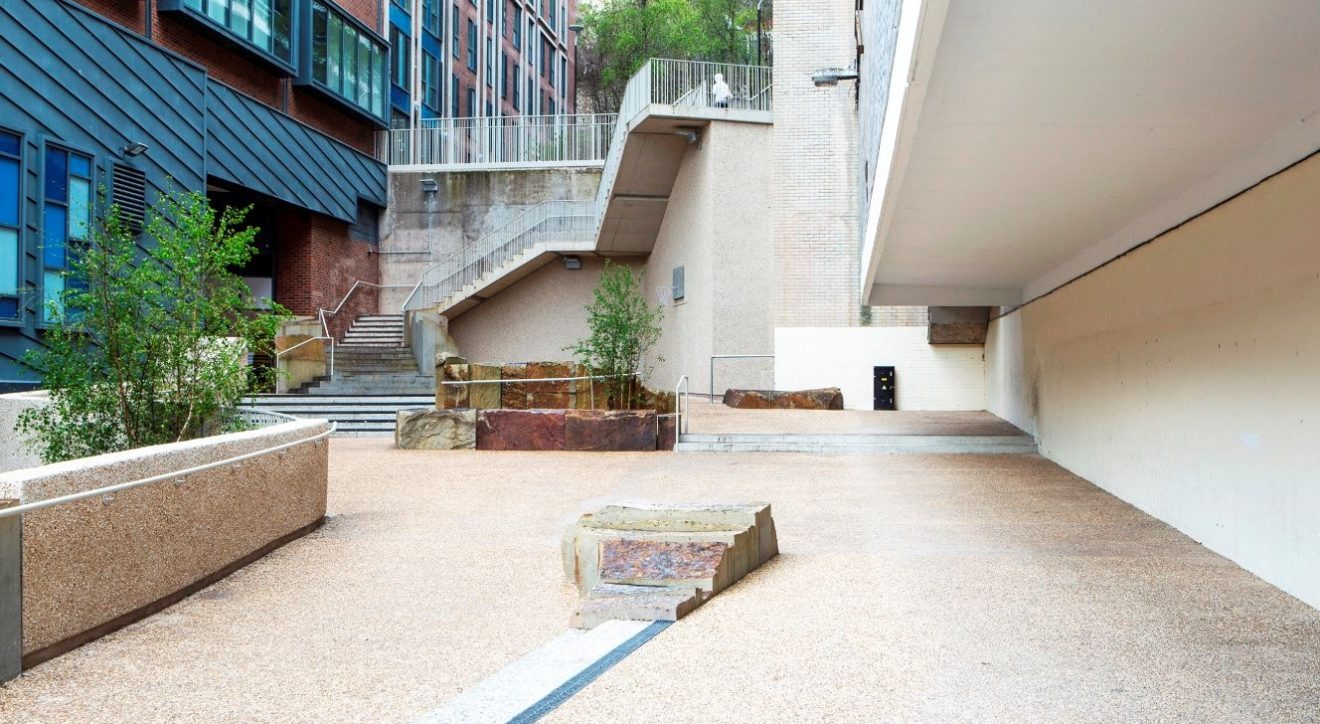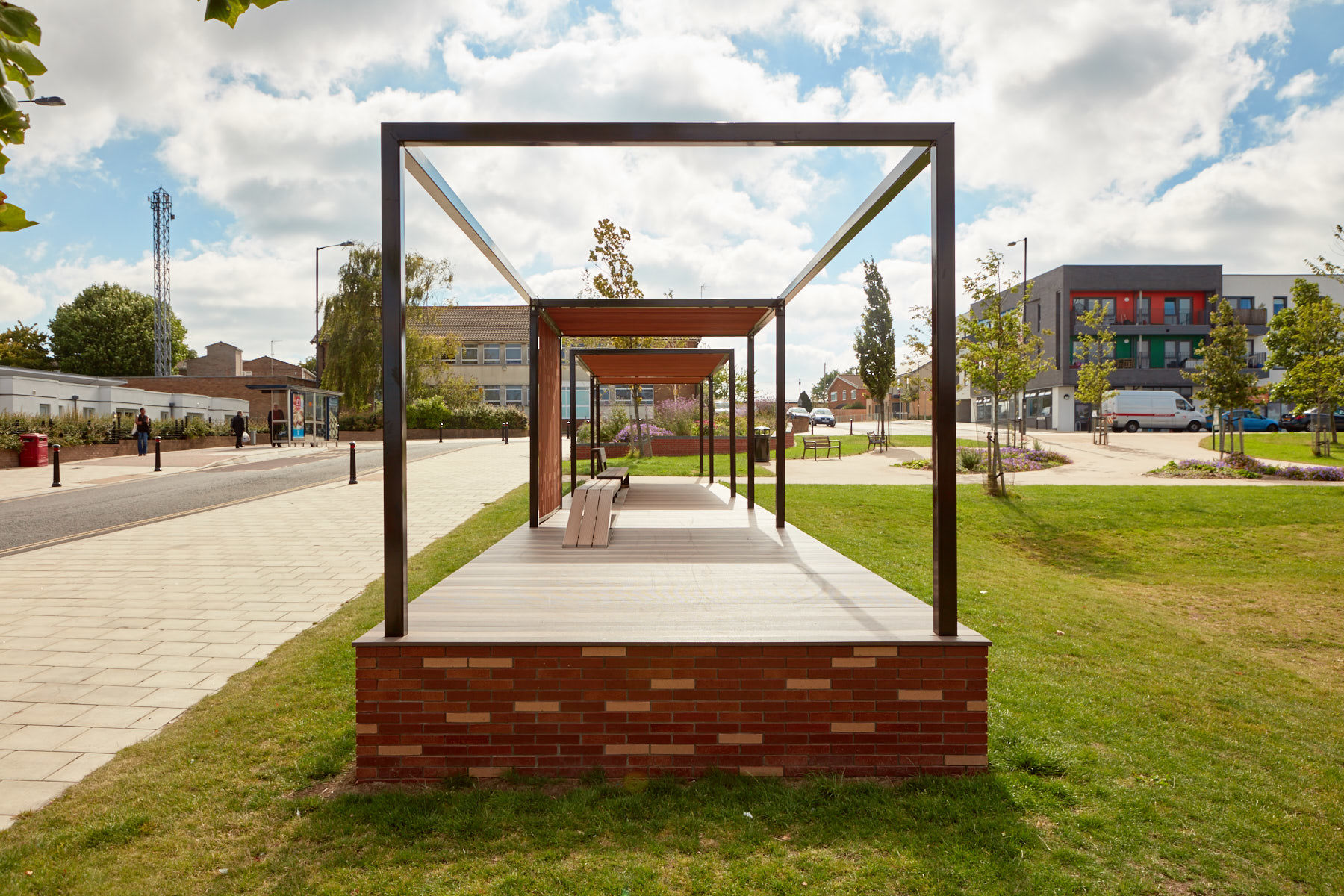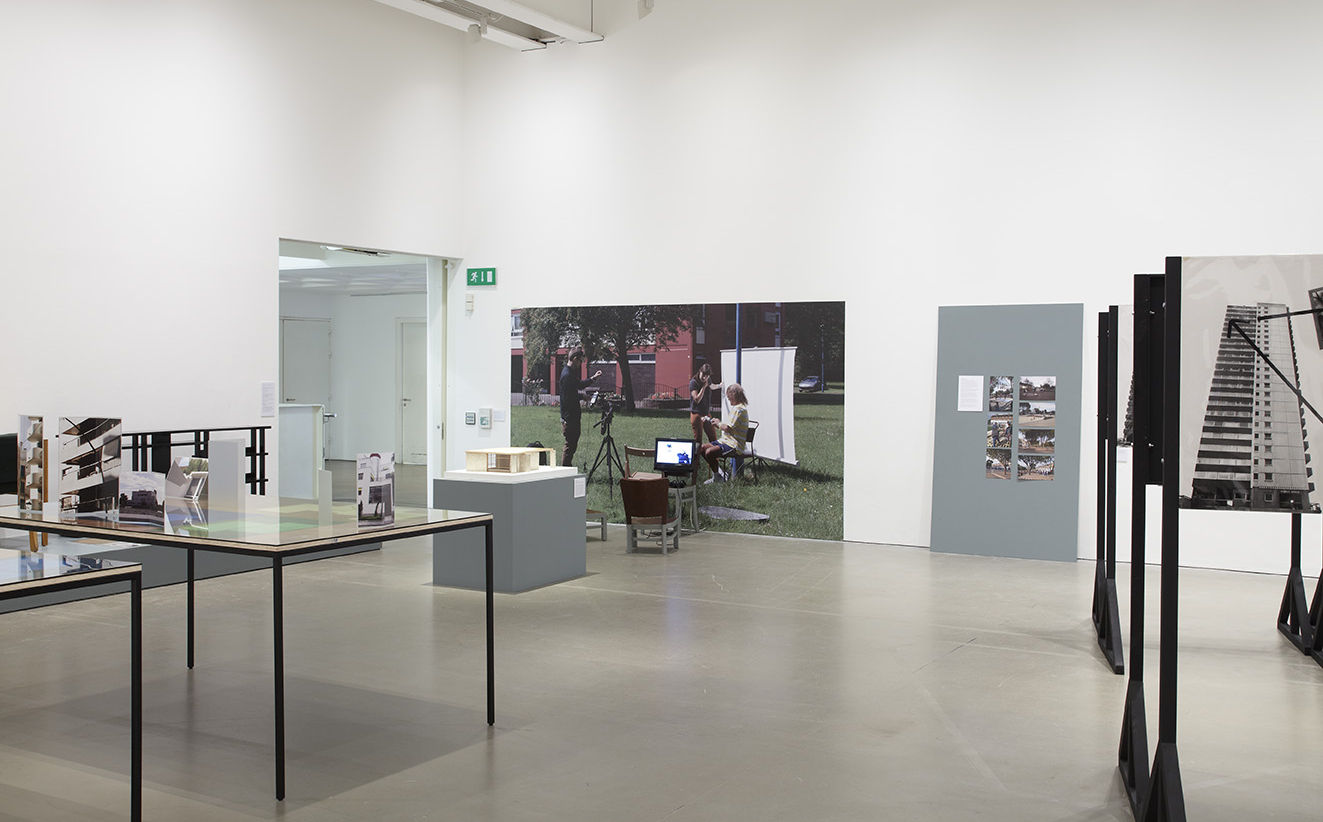
Synopsis
The renovation of the Stoney Street pedestrian public right of way was conceived and designed as a route and a destination social space to articulate through the use of materials the disjuncture between the crust of human occupation above ground and the bedrock beneath.

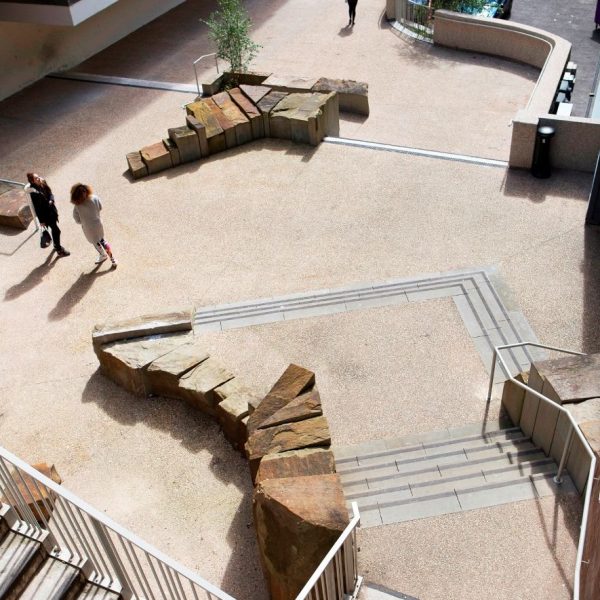
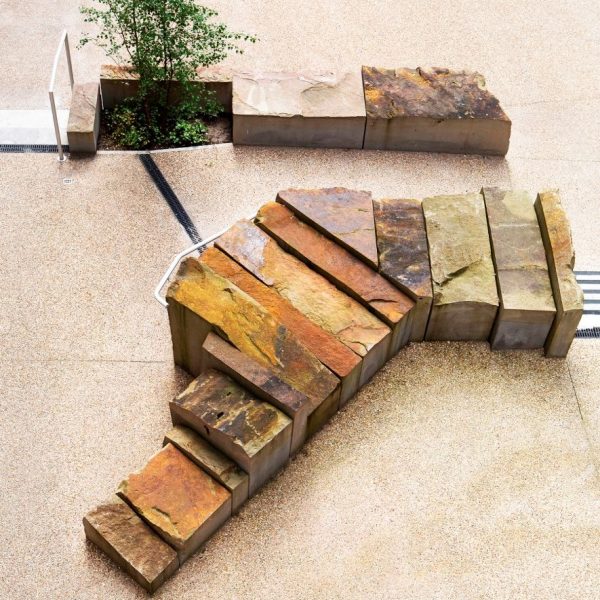

Natural stone is used to create a landscape of informal seating and to take up the level differences where steps and ramps meet and to ground the main flight of steps from the upper level.
Stoney Street is the primary pedestrian route between the halls of residence and the University Campus and has the inherent drama of a narrow, steeply sloping, south facing site with a pocket of green wilderness in a built up area of the city.
The brief was to reinstate the pedestrian right of way and the scheme was delivered as the public art commission for the Unite student halls of residence development, the project was nurtured through planning by the Bristol City Council Public Art Officer Aldo Rinaldi and the planning case officer Paul Howarth.
The challenge was to deliver a bespoke scheme within a design build contract on a site that was highly constrained by the topography without it becoming an essay in accommodating back of house functions, value engineering or balustrades to protect fall heights. Additional constraints included the need for a crane to access two substations and building regulations to provide large enough areas around fire exits and a compliant step free gradient.
The budget was limited and the design strategy was for an uneven spend to deliver a scheme of pared-back drama using a very limited palette of stone in the form of large raw slabs of Forest of Dean Pennant sandstone, aggregates and plain cast concrete, with simple detailing where one material meets another and in the design of the hand rails and balustrades.
A decision was made to procure locally and the stone was sourced from Barnhill Quarry in the Forest of Dean, Gloucestershire; the closest Pennant sandstone quarry to the site. The detail design was advanced through visits to the quarry to identify the most cost effective and technically viable way to maximize the drama of using very large stone blocks with the oxidised red outer crust contrasting with the blue/grey cut faces.
The route from Trenchard Street up to the Unite building is designed as a single, primary step free route, so access is the gorgeous norm. The steps to the upper level are designed to minimize the undercroft and give the pedestrian a clear view from the top down to their destination at the bottom and so improve safety and perceptions of safety. The scheme makes informal places to socialise both for the student residents, the passer by and for the hopeful autograph hunters who loiter on Trenchard Street outside the 02 venue.
Concept and detailed design: muf architecture/art
Stone design support and realization: Forest of Dean Stone Firms LTD (Nicholas Horton, Paul Blake, Brian Andrews, Graham Andrews, Daniel Watts, Trevor Morse and Chris Griffin).
Structural engineering: Lee Wingate – Meinhardt LTD
Soft landscape design: Lizzie Tulip Garden Design
CDM: Martyn Cawse
Main contractor – RG Group
Pennant stone supply and cutting – Forest of Dean Stone Firms LTD
Pennant stone fixing – Stuart Aston WR Bedford
Exposed aggregate – Lafargetarmac
Handrails, balustrades + metal work – CJN Engineers
Stone render – Woodman Bros
Cast in situ concrete – Stephenson SSC
muf architecture/art was established in 1995 and is led by the founding partners Liza Fior, architect, and Katherine Clarke, artist.
muf’s interdisciplinary work encompasses master planning, urban design, landscape design, buildings, temporary and permanent public art, participative research and digital platforms.
muf have pioneered a strategy of ‘incremental urbanism’, an approach to regeneration through art, urbanism and architecture that identifies and builds on the existing values of a place, this approach proactively makes the most of what is there and this responsive way of working, ensures that delivery on the ground is a sustainable step towards a vision of the future.
muf have a proven track record of making meaningful space for the child, integrated as part of any neighbourhood development. We have experience of successful working with formal and informal education organizations and our aim in these situations is to deliver schemes that are open-ended and which remain benignly uncertain and so provoke and establish the habit of an internal questioning in the end user, both child and adult, of the fabric of the built environment.
Over the last three years we have completed significant public realm projects, worked with developers and local authorities to advance the quality of design and established strategies and guidelines that have been adopted in their entirety and implemented. Both our build schemes and our research proactively inform planning policy to shape future places.
Although better known for public realm schemes, muf have consistently produced public and mixed use buildings with a particular emphasis on working with institutions to proactively extend the impact of the built beyond the building footprint to enhance and contribute to the wider context and public realm and where brief development the opportunity for an organization to develop.
Unite Students is the UK’s largest and most established manager and developer of purpose-built student accommodation. It provides a home for around 50,000 students, in more than 140 properties, across 28 leading university cities in England and Scotland. Unite works in partnership with more than 60 Higher Education institutions and also lets rooms directly to students.
Founded in 1991, Unite Group is a FTSE 250 company listed on the London Stock Exchange. In addition to its wholly owned properties, UNITE is also invested in and operates a small number of specialist funds and joint ventures with institutional investment partners, the largest of which is the £2.1 billion Unite UK Student Accommodation Fund (USAF).
Unite Students is the founder and major donor of The Unite Foundation, a charity which supports young people lacking family support. Established in 2012 it has supported 160 students with accommodation and bursaries through their study years. The first successful scholars graduated in 2015.
